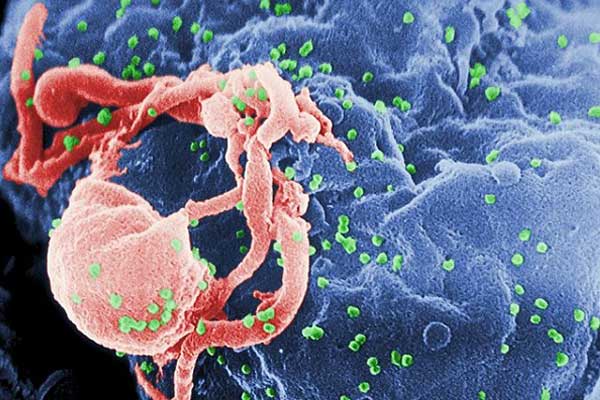
Gonorrhea and HIV linked, U of T researchers find
Published: June 4, 2013
University of Toronto researchers have discovered a molecular link that explains why gonorrhea increases transmission of Human Immunodeficiency Virus (HIV) between sexual partners.
It's a landmark discovery that could lead to better treatments for both conditions.
Each year, five million new HIV and more 100 million new gonorrhea infections are reported worldwide. However, while scientists have always known gonorrhea increases the infectiousness of HIV, they didn’t know why.
 The study solves the mystery by discovering a long sought-after molecular link between the two sexually transmitted infections, says Scott Gray-Owen, a professor in the Faculty of Medicine’s Department of Molecular Genetics (pictured right) and senior author of the study.
The study solves the mystery by discovering a long sought-after molecular link between the two sexually transmitted infections, says Scott Gray-Owen, a professor in the Faculty of Medicine’s Department of Molecular Genetics (pictured right) and senior author of the study.
“Gonorrhea is a global epidemic that spreads at astonishing rates, and emerging antibiotic-resistant strains are difficult to treat. Our discovery helps explain the relationship between gonorrhea and HIV, which could significantly impact the treatment of both infections,” says Gray-Owen.
When a person becomes infected with gonorrhea during sexual intercourse, the bacteria releases a molecule called heptose phosphate into their genital tract. Their body recognizes the heptose phosphate as a threat, and sends white blood cells to try to combat it.
However, if this person is already carrying HIV — even if it’s dormant — the process can actually activate the virus, which may otherwise be hiding in immune cells. This makes the person more infectious and increases the risk that they’ll transmit HIV to other partners.
“We discovered that the immune process meant to fight gonorrhea actually drives HIV replication,” says Gray-Owen. “This discovery is a game-changer that can help us tackle two very large global health crises. By effectively treating gonorrhea we may be able to stop the spread of HIV.”
The study was published June 3 in Proceedings of the National Academy of Sciences (PNAS) of the United States of America.
Suniya Kukaswadia is a writer with the Faculty of Medicine at the University of Toronto.



